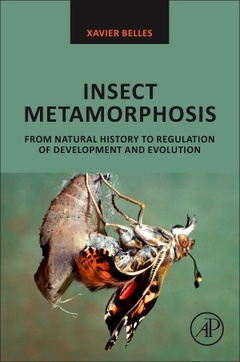Description
Insect Metamorphosis
From Natural History to Regulation of Development and Evolution
Author: Belles Xavier
Language: English
304 p. · 15x22.8 cm · Paperback
Description
/li>Contents
/li>Readership
/li>Biography
/li>Comment
/li>
Insect Metamorphosis: From Natural History to Regulation of Development and Evolution explores the origin of metamorphosis, how it evolved, and how it is it regulated. The book discusses insect metamorphosis as a key innovation in insect evolution. With most of the present biodiversity on Earth composed of metamorphosing insects?approximately 1 million species currently described, with another 10-30 million still waiting to be discovered, the book delves into misconceptions and past treatments. In addition, the topic of integrating insect metamorphosis into the theory of evolution by natural selection as noted by Darwin in his On the Origin of Species is also discussed.
Users will find this to be a comprehensive and updated review on insect metamorphosis, covering biological, physiological and molecular facets, with an emphasis on evolutionary aspects.
1. The ideas of metamorphosis through time2. Life cycles and modes of metamorphosis3. Embryo development and metamorphosis4. Postembryonic development. Molting5. Hormones involved in the regulation of metamorphosis6. Molecular mechanisms of hormonal action7. The role of microRNAs in the regulation of metamorphosis8. The origin of hemimetaboly9. The evolution of metamorphosis
Researchers in insect biology in universities and research institutes; university professors of entomology, developmental biology, and life sciences. Experts in insect pest control in the industry sector as well as in the academic sector. Developmental biologists, especially those working with model insects, like Drosophila, and working in post-embryonic development in non-insect models that experience metamorphosis (amphibians, crustaceans, jellyfishes, etc.). Animal morphologists interested in processes that trigger changes of form. Secondary: Amateur entomologists, insect collectors, members of entomological societies. Teachers (elementary, high school) of natural history.
- Features updated knowledge from the past decade on the mechanisms of action of juvenile hormone, the main doorkeeper of insect metamorphosis
- Aids researchers in entomology or developmental biology dealing with specialized aspects of metamorphosis
- Provides applied entomologists with recently updated data, especially on regulation, to better face the problems of pest control and management
- Gives general evolutionary biologists context on the process of metamorphosis in its larger scope




